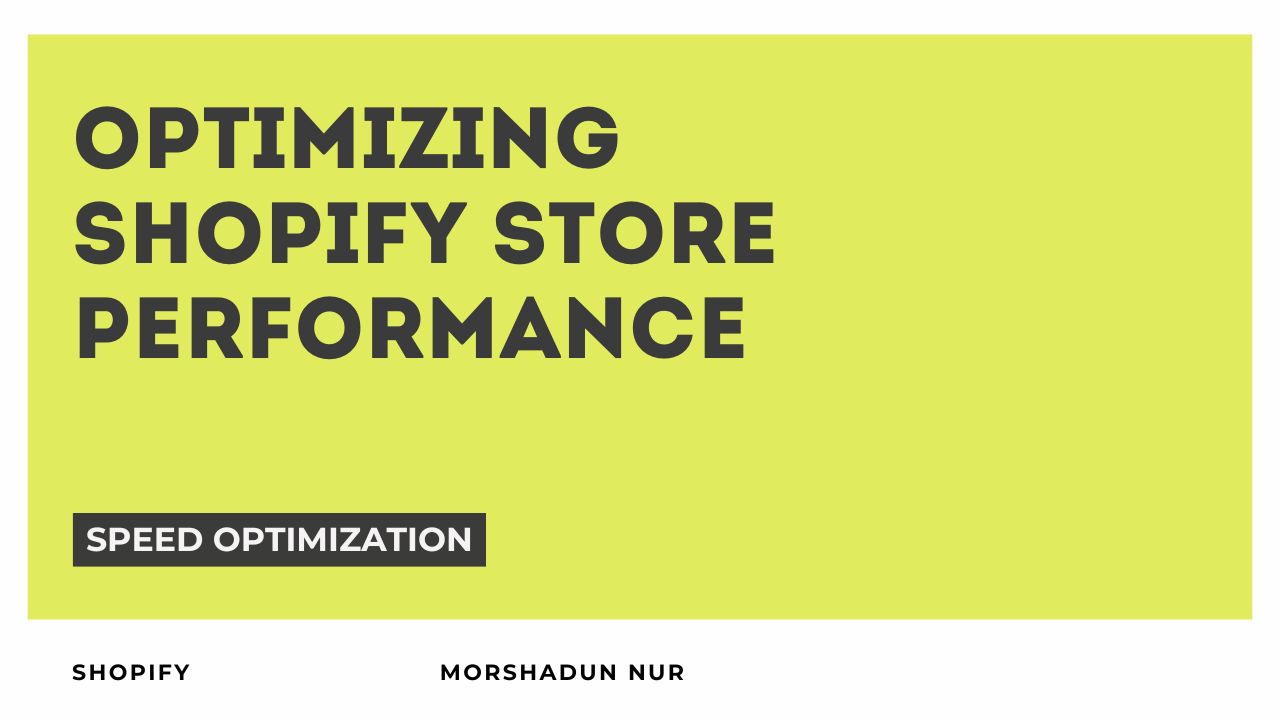
Optimizing Shopify Store Performance: A Comprehensive Guide
In the competitive world of e-commerce, every second counts. Studies show that a one-second delay in page load time can reduce conversions by up to 7%. For Shopify store owners, optimizing performance isn't just about technical improvements—it's directly tied to your bottom line.
A fast-loading Shopify store provides several key benefits: improved user experience, higher conversion rates, better search engine rankings, lower bounce rates, and a competitive advantage in your market.
"53% of mobile site visitors will leave a page that takes longer than three seconds to load. Optimizing your Shopify store's performance is no longer optional—it's essential for e-commerce success."
Key Performance Metrics to Monitor
Before diving into optimization strategies, it's important to understand what metrics matter most for your Shopify store:
- Time to First Byte (TTFB): How quickly your server responds to requests
- First Contentful Paint (FCP): When the first content appears on screen
- Largest Contentful Paint (LCP): When the largest content element becomes visible
- Total Blocking Time (TBT): Measures responsiveness during page load
- Cumulative Layout Shift (CLS): Visual stability of your page
Tools like Google PageSpeed Insights, Lighthouse, and GTmetrix can help you measure these metrics for your Shopify store.
1. Optimize Your Images
Images typically account for the largest portion of a page's weight. Optimizing them can significantly improve load times:
- Use appropriate formats: JPEG for photographs, PNG for images with transparency, and WebP as a modern alternative that offers better compression
- Compress images: Use tools like TinyPNG, ImageOptim, or Shopify's built-in image optimization
- Implement lazy loading: Only load images when they're about to enter the viewport
- Use responsive images: Serve different image sizes based on the user's device
- Specify image dimensions: Always include width and height attributes to prevent layout shifts

2. Minimize Theme Code
Your Shopify theme's code can significantly impact performance:
- Choose a lightweight theme: Start with a well-optimized theme as your foundation
- Remove unused code: Eliminate unnecessary JavaScript and CSS
- Minify CSS and JavaScript: Remove whitespace and comments to reduce file size
- Combine files: Reduce HTTP requests by combining multiple CSS or JavaScript files
- Defer non-critical JavaScript: Prevent render-blocking resources
Pro Tip:
Use the Chrome DevTools Coverage tab to identify unused CSS and JavaScript in your theme. This can help you target specific code for removal or optimization.
3. Leverage Browser Caching
Browser caching stores website resources locally in a user's browser, reducing load times for returning visitors:
- Set appropriate cache headers: Configure your server to instruct browsers how long to cache resources
- Use a CDN: Content Delivery Networks like Cloudflare or Shopify's built-in CDN cache your content globally
- Implement versioning: Add version numbers to file names to ensure users get the latest versions when you make updates
4. Reduce App Bloat
While Shopify apps add functionality, they can also slow down your store:
- Audit your apps regularly: Remove unused or redundant apps
- Prioritize performance-focused apps: Choose apps that are known for minimal performance impact
- Consider custom solutions: For critical functionality, a custom-coded solution might be more efficient than a third-party app

5. Optimize Your Checkout
A streamlined checkout process is crucial for conversions:
- Minimize form fields: Only ask for essential information
- Enable autofill: Use proper input types to allow browsers to autofill customer information
- Implement address validation: Reduce errors and improve the customer experience
- Offer guest checkout: Remove barriers to purchase
6. Implement Advanced Techniques
For stores looking to push performance even further:
- Use critical CSS: Inline critical styles to render above-the-fold content quickly
- Implement HTTP/2: Take advantage of multiplexing and server push
- Consider headless commerce: Decouple your frontend from Shopify's backend for maximum performance
- Optimize third-party scripts: Load analytics and marketing scripts asynchronously or defer them
Pro Tip:
When implementing third-party scripts, use the async or defer attributes to prevent them from blocking page rendering. This simple change can significantly improve perceived load times.
Case Study: Performance Optimization Results
Recently, I worked with an apparel brand whose Shopify store was struggling with slow load times, particularly on mobile devices. Their PageSpeed score was in the 40s, and they were experiencing high bounce rates and cart abandonment.
After implementing the strategies outlined above, we achieved:
- PageSpeed score improvement from 45 to 92
- 40% reduction in page load time
- 22% decrease in bounce rate
- 15% increase in conversion rate
- Significant improvement in mobile user engagement

Conclusion
Optimizing your Shopify store's performance is an ongoing process, not a one-time task. Regular audits and continuous improvements are necessary to maintain peak performance as your store grows and evolves.
By focusing on image optimization, code efficiency, caching, app management, checkout optimization, and advanced techniques, you can create a lightning-fast shopping experience that delights customers and boosts your bottom line.
Remember that even small improvements can have a significant impact on user experience and conversions. Start with the quick wins, measure your results, and gradually implement more advanced optimizations.
Need Help Optimizing Your Shopify Store?
I specialize in Shopify performance optimization and can help you implement these strategies to improve your store's speed and conversion rates.
Get a Performance Audit